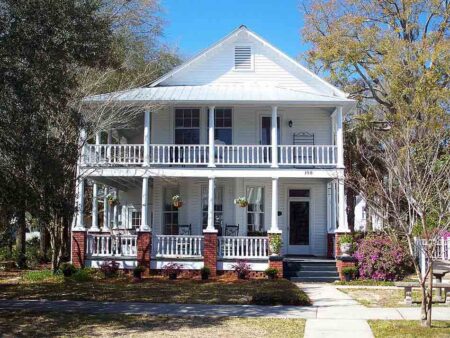FLORIDA — With a little planning, you can have a shrub or tree in flower every month of the year in North Florida.
In today’s article, I will expand upon a topic that Dan Mullins wrote about. Mullins is an Emeritus UF/IFAS Horticulture Agent. He suggested that a gardener could observe the natural sequence of flowering throughout the year and use this information to select plants for seasonal color.
Flowering trees and shrubs bloom according to a “built-in” or natural pattern that is predictable.
Dan and I provide the following examples of plants that offer colorful blooms during the different seasons in North Florida. Some are included on my list of favorite landscape plants.
During winter, camellias become the focus of many gardens. There are many varieties, including early, mid, and late-season bloomers that provide color from November through February. Osmanthus fragrans, commonly known as Sweet Osmanthus, also provides fragrant flowers during winter.
Some of the deciduous magnolias with common names such as saucer and star produce large pink, lavender, or purple blossoms. They bloom in January and February. Red buckeye, a native shrub or small tree, puts forth red flower spikes during late winter to early spring.
Azalea flowers are a common site along the Gulf Coast during spring. At the same time, spiraea, beautyberry, loropetalum, rhapeolepsis (Indian Hawthorne), viburnum, pineapple guava, and banana shrub can be seen in full bloom. Banana shrub produces fragrant yellow flowers that smell like ripe bananas.
As azalea flowers begin to fade, some late spring bloomers take over. The gardenias, with their white blossoms and unmatched fragrance, are very popular. Meanwhile, the bottlebrush begins to come into full flower.
The hydrangeas, in various colors, take over in late spring. Varieties of the French Hydrangea, also known as Hydrangea macrophylla, are most popular. Oakleaf hydrangea, a native with creamy white flower clusters, blooms at about the same time.
Crape myrtles begin blooming in late spring or early summer, about mid-May or June, and continue throughout summer. Other shrubs that provide summer color include abelia, Texas sage, and oleander.
During fall, sansanqua camellias draw much attention. This early flowering camellia begins blooming in October and continues for several weeks. I have a pink variety that is in full bloom now. Many of the Cassia shrubs are equally showy. Gulf muhly grass produces feathery pink or purple flower stalks during fall that give it a distinctive and attractive appearance.
These are only a few of the plants that flower during the different seasons in North Florida. More information on these plants is available through the UF/IFAS Extension Office in your County or from this website: https://sfyl.ifas.ufl.edu/lawn-and-garden/florida-landscape-plants.
Larry Williams is the Extension Horticulture Agent with the Okaloosa County Cooperative Extension Service, University of Florida. Contact Larry at 689-5850 or email lwilliams@myokaloosa.com.







